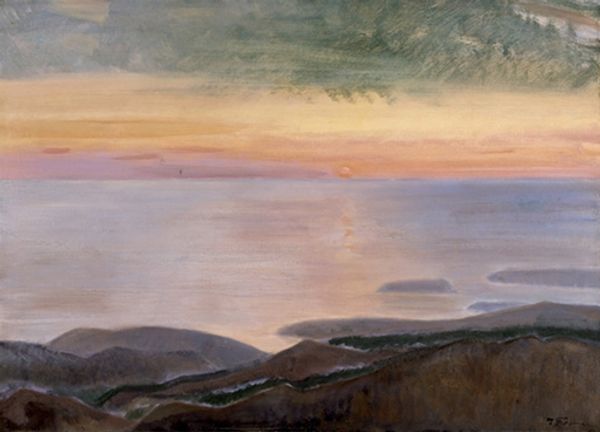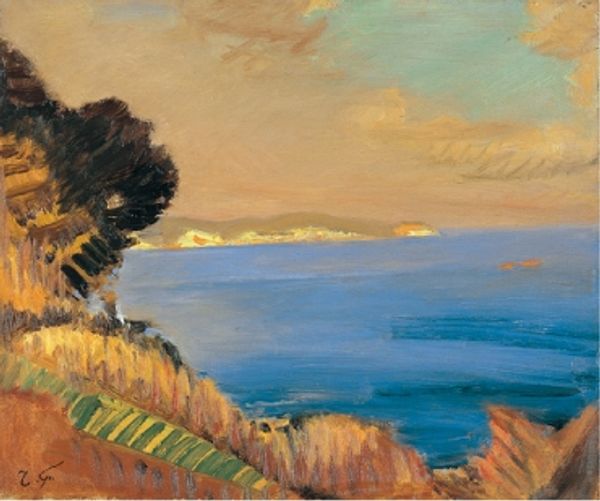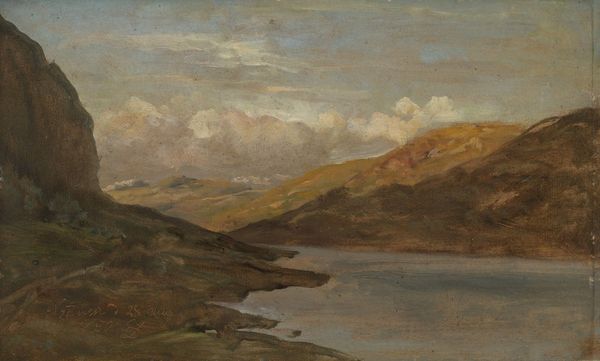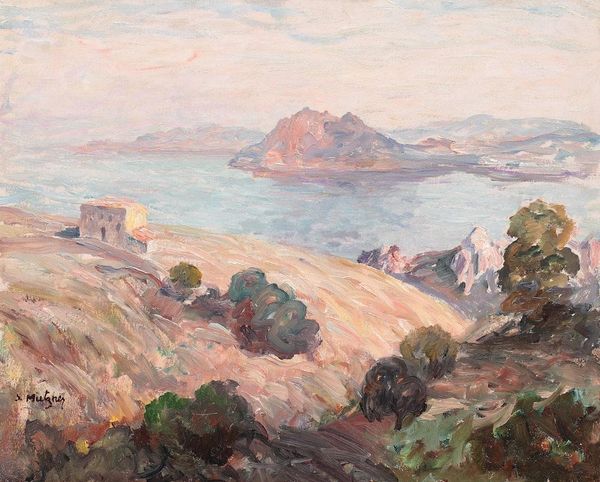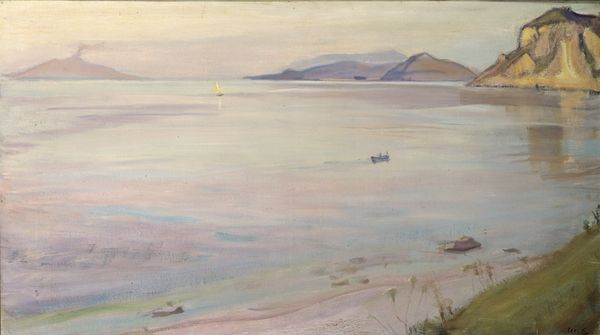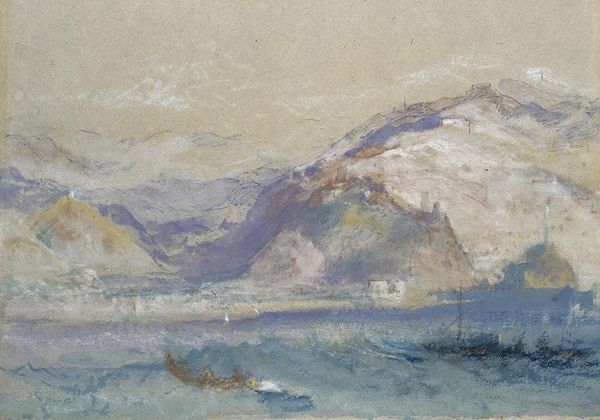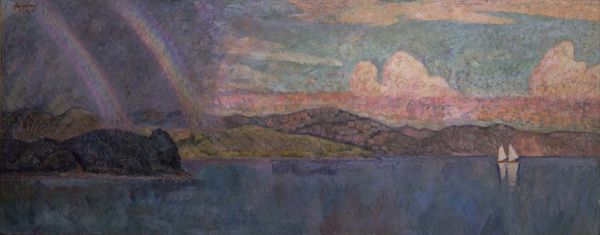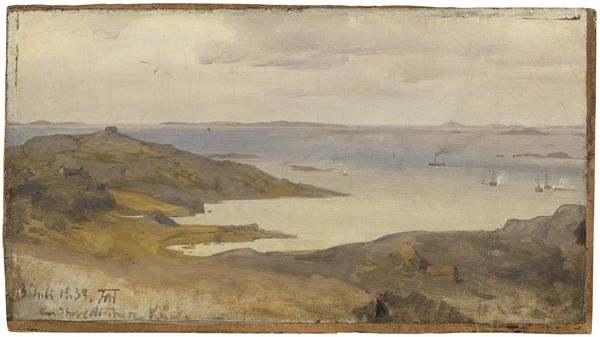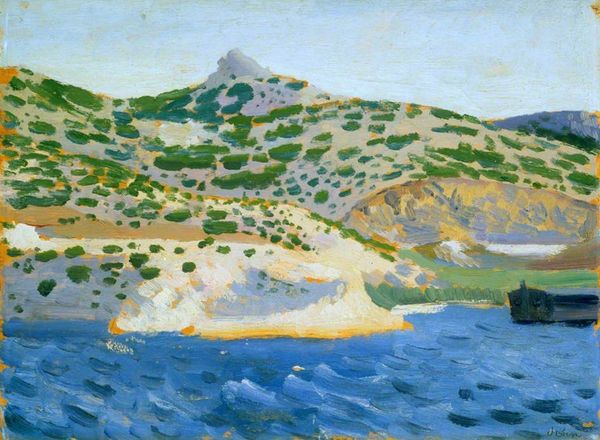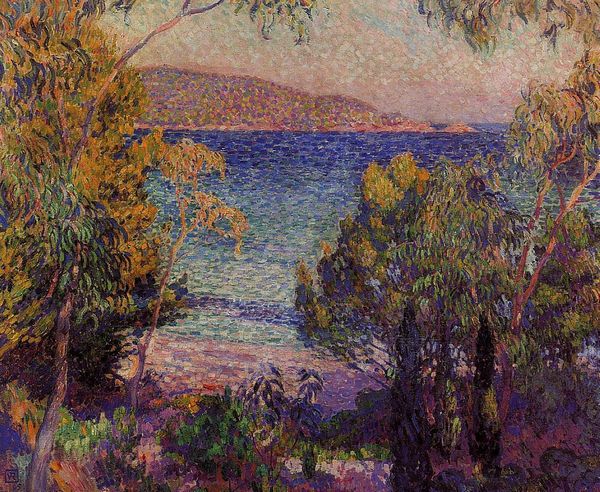
#
abstract expressionism
#
sky
#
cliff
#
abstract painting
#
impressionist landscape
#
possibly oil pastel
#
oil painting
#
rock
#
acrylic on canvas
#
underpainting
#
paint stroke
#
painting painterly
#
watercolor
Copyright: Public domain
George Washington Lambert created 'Anzac from Gaba Tepe' with oil on wood. The composition is strikingly divided; a deep blue sea sharply contrasts with the ochre and brown tones of the rugged cliffs and sparse vegetation. This bold division creates a visual tension, a stark interplay between tranquility and harshness. Lambert's brushstrokes, particularly in the cliffs, are textured, almost sculptural, lending a tactile quality to the landscape. The darker hues draw the eye to the foreground, inviting a contemplation of the immediate physical space. The horizon line, softened by atmospheric perspective, suggests a broader, perhaps unattainable vista. This strategic use of colour and texture transcends mere representation. The painting functions semiotically: the blue could signify hope or the unknown, while the rough, earthy tones suggest resilience and struggle. 'Anzac from Gaba Tepe' destabilizes conventional landscape art. It prompts us to question how places carry meaning, shaped both by their physical attributes and the events they witness.
Comments
No comments
Be the first to comment and join the conversation on the ultimate creative platform.
